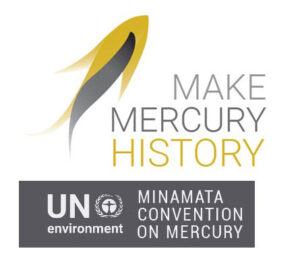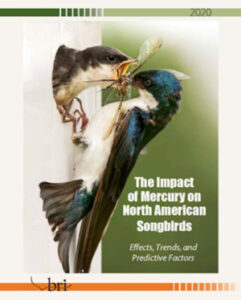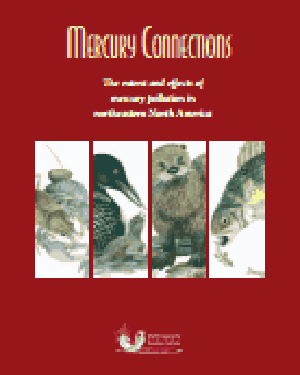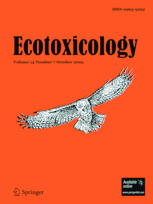As part of this investigative synthesis, environmental mercury loads will be documented geographically by major biomes (Arctic, Temperate and Tropical) and their associated freshwater and marine waters, as well as for major taxa (elasmobranch and teleost fish, reptiles, birds, and mammals).
A synthesis paper of much of the published mercury data for fish, sea turtles, birds and marine mammals will be a core part of this special issue, as will the development of a global model assessing ecosystem sensitivity, risk and threats to biota, as well as biological diversity.
Guest Editors
David Evers
Biodiversity Research Institute
david.evers@briwildlife.org

Paco Bustamante
La Rochelle Université
paco.bustamante@univ-lr.fr

Luiz Fernandez
Wake Forest University
fernanle@wfu.edu

Manoela Miranda,
Secretariat of the Minamata Convention on Mercury
manoela.miranda@un.org

Mercury Connections: From Scientific Collaboration to Policy
Developing special journal issues on the impact of mercury in the environment fosters research collaboration among distinguished scientists across various disciplines and regions, as well as land-use managers, government agencies, nongovernmental organizations, and academic institutions.
These special journal issues help to bring critical scientific findings to the forefront of policy awareness and need. They also provide a platform for communicating science that is an increasingly important and necessary tool for decision makers and regulators in the critical process of developing and regulating policy.
Biodiversity Research Institute has been fortunate to coordinate five such science-policy collaborations on the topic of mercury in the environment – see below descriptions and connections to those special journal issues and the associated policy communications pieces.
The Impact of Mercury on North American Songbirds (2020)

A group of 61 scientists collaborated on producing 15 papers that describe the impacts of mercury on songbirds across the United States and Canada and are included in a special issue of Ecotoxicology. (Cristol, D.A. and Evers, D.C. 2020. The impact of mercury on North American songbirds: effects, trends, and predictive factors. Ecotoxicology 29:1107-1116.) The Impact of Mercury on North American Songbirds highlights the major findings of those studies and collaborative effort.
New York State (2018-2019)

This collaborative effort examines spatial and temporal trends of mercury accumulation in the environment and biota across New York State. This scientific synthesis has culminated in a series of 22 papers published in a special issue of the journal Ecotoxicology (Volume 29, issue 10, December 2020 Guest editors: David Evers, Charles Driscoll, Doug Burns, Nicholas Fisher, Amy Sauer). New York State Mercury Connections highlights major findings of the collaborative effort. Download the complete booklet HERE.
Find the Ecotoxicology special issue (Vol. 29, Issue 10, October 2020) HERE.
Western North America (2011-2014)

A collaborative effort to assess environmental mercury deposition for the western region of North America resulted in 18 papers published in a special issue of Science in the Total Environment. Researchers collected state, provincial, and federal measurements of mercury in biota, air, water, and soil to better understand spatial and temporal trends in mercury accumulation and deposition in western regions of the United States and Canada, as well as in areas of Mexico.
Great Lakes Region (2008-2011)

In a regional mercury study that encompassed the largest freshwater ecosystem in the world, BRI collaborated with the Great Lakes Commission and the University of Wisconsin-La Crosse to compile a wide variety of mercury data. In this study, 170 scientists and managers compiled and evaluated more than 300,000 mercury measurements. Primary results have been published in 35 scientific papers in the journals Ecotoxicology and Environmental Pollution. A summary of the research is presented in the report, Great Lakes Mercury Connections: The Extent and Effects of Mercury Pollution in the Great Lakes Region.
Northeastern United States and Eastern Canada (2001-2005)

In this landmark study, BRI and Environment Canada led a comprehensive effort to compile mercury data from across the northeastern United States and eastern Canada. As a result, 21 scientific papers were published in a special issue of Ecotoxicology (Biogeographical patterns of environmental mercury in northeastern North America. 2005. Ecotoxicology. Volume 14, numbers 1 and 2. Guest Editors: David C. Evers and Thomas A. Clair.)
BRI’s report, Mercury Connections: The Extent and Effects of Mercury Pollution in Northeastern North America summarizes the data.
Photo Credits: Header photo © Shutterstock


 Understanding the biotic response to methylmercury availability in the environment for all biomes and key biota is vital for evaluating the effectiveness of the Minamata Convention on Mercury and enhancing its contribution to broader environmental goals, including biodiversity conservation. To advance scientific understanding of mercury exposure in biota from around the world, an esteemed group of 193 international scientists collaborated on producing 19 peer-reviewed papers. A synthesis of these papers can be found
Understanding the biotic response to methylmercury availability in the environment for all biomes and key biota is vital for evaluating the effectiveness of the Minamata Convention on Mercury and enhancing its contribution to broader environmental goals, including biodiversity conservation. To advance scientific understanding of mercury exposure in biota from around the world, an esteemed group of 193 international scientists collaborated on producing 19 peer-reviewed papers. A synthesis of these papers can be found 